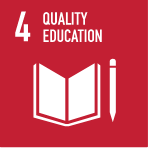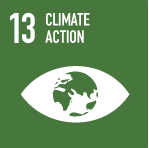Klim:ReAction
Facing climate change on site
Dr. Christina Fiene, Dana Graulich, M. Sc., Prof. Alexander Siegmund
 |  | |
 | ||
Warnings of extreme heat in cities become more regular, the bark beetle spreads and increasingly harms the stand of spruces, animal species expand to cooler regions, heavy weather events, such as high and low water level, heavy rainfall and droughts occur more often. The consequences of worldwide climate change can be felt already today – and just on our doorstep.
To minimize hazard risk due to climate change, societies need to adapt to these changes in a sustainable way. Adaptation to climate change is, next to climate mitigation, aiming to reduce the CO2 emissions, the second important pillar of climate policies.
Measures for climate adaptation are many-faceted: Shadowing public places and deployment of drinking water dispensers helps people to find refreshment on hot summer days. Building a network between different habitats allows endangered species to move to more favorable habitats and renaturation of riverbanks offers protection from floods.
Young generations are an important target group in climate communication – they will make fundamental decisions about politics and society in the near future. Surveys show that young people often confuse or mix up measures for climate mitigation with adaptation (Bofferding und Kloser 2015; Schrot et al. 2019; Graulich et al. 2021).
Within ‘Klim:ReAction’, these knowledge gaps are targeted. This multimedia application consists of a web platform and a mobile app, where climate change impact on the environment is explained and visualized on exemplary landscapes in Baden-Württemberg. In addition, likely adaptation measures are presented and discussed.
How well is the surrounding of my school adapted to climate change? How can you design a garden, that is on the one side adapted to heat and drought and on the other side still provides food for insects? Why would a sealed, dark ground store quite a significant amount of heat, while green areas can help cooling down surrounding air? Can I also find witnesses of climate warming in the local forest, where damage on spruces are an evident indication of wide-spread losses on forests?
Answering all these questions and many more will be content the mobile app. By thoughtfully investigate their surroundings, students will learn to identify and evaluate consequences of climate change and opportunities for adaptation in their everyday life. Observations can be reported within the app and will appear on an interactive map. Locally precise climate information and additional learning material will support scholars in connect their local observations to their knowledge of global climate change.
Project period: 01.10.2018 – 31.12.2022
Funded by the Federal Ministry of the Environment, Climate Protection and the Energy Sector Baden-Württemberg
Klim:ReAction on the news:
- 02.10.2023 Das Klim:ReAction-Team beim Kongress "Klimafit in die Zukunft"
- 27.09.2023 rgeo-Team mit Beiträgen auf dem Deutschen Kongress für Geographie in Frankfurt
- 10.07.2023 Mit der mobilen App bei der KIT Wissenswoche
- 30.05.2023 Teilnahme an der LEARNTEC




